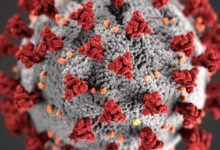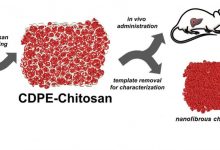
What is sickle cell anemia?
Sickle cell anemia is a blood disorder which is an inherited form of anemia. Normally RBC is round in shape and moves easily through a blood vessel. In this condition, they became sickle-shaped, sticky and clumps together and blocks small blood vessels, which can slow or block blood flow and oxygen to parts of the body. His blocking can lead to severe pain and swelling in the affected body parts.
What’s new?
A team of researchers from the Massachusetts Institute of Technology has found how vaso-occlusive pain crises during sickle cell anemia arise. A vaso-occlusive crisis is a common painful complication of sickle cell anemia in adolescents and adults. The findings can help to predict when such a crisis might occur.
“These painful crises are very much unpredictable. In a sense, we understand why they happen, but we don’t have a good way to predict them yet,” says Ming Dao, a principal research scientist in MIT’s Department of Materials Science and Engineering and one of the senior authors of the study.
These painful events are produced by reticulocytes, the immature red blood cells which are more susceptible to stick to blood vessel walls.
Patients having sickle cell disease often suffer from anemia as the abnormal hemoglobin can’t carry as much oxygen. They also face vaso-occlusive pain crises, which are usually treated with opioids or other drugs.
What did they do in their study?
The focus of the study was to find how red blood cells interact with blood vessels to set off a vaso-occlusive crisis. Hence the researchers built a specialized microfluidic system that mimics the post-capillary vessels. These vessels are about 10-20 microns in diameter and carry deoxygenated blood away from the capillaries. Vaso-occlusions occur mostly in these vessels.
During their research, the microfluidic system allowed researchers to control the oxygen level.
Findings
Researchers saw the similar view to what is seen in post-capillary vessels. they found that under low oxygen level, sickle red cells are two to four times more likely to get stuck to the blood vessel walls than they are at normal oxygen levels. This happens because sickle cell’s hemoglobin in low oxygen condition forms stiff fibers. These fibers grow and push the cell membrane outward and help the cells stick more firmly to the lining of the blood vessel.
“There has been little understanding of why, under hypoxia, there is much more adhesion,” Suresh says. “The experiments of this study provide some key insights into the processes and mechanisms responsible for increased adhesion.”
“We observed the growth of sickle hemoglobin fibers stretching reticulocytes within minutes,” Papageorgiou says. “It looks like they’re trying to grab more of the surface and adhere more strongly.”
Their previous studies measured the time duration taken by blood cells from sickle cell patients to stiffen and blocking the blood flow in tiny blood vessels. with these both study in mind, researchers now hope to devise a more complete model of vaso-occlusion that combines their new findings on adhesion with previous work.
Prediction of vaso-occlusion crises for individual patients
Not all patients with sickle cell disease experience vaso-occlusion and the frequency of attacks can vary widely between patients. The MIT researchers hope that their findings may help them to devise a way to predict these crises for individual patients.
“Blood cell adhesion is indeed a very complex process, and we had to develop new models based on such microfluidic experiments. These adhesion experiments and corresponding simulations for sickle red cells under hypoxia are quantitative and unique,” says George Karniadakis, a professor of applied mathematics at Brown University and a senior author of the study.






